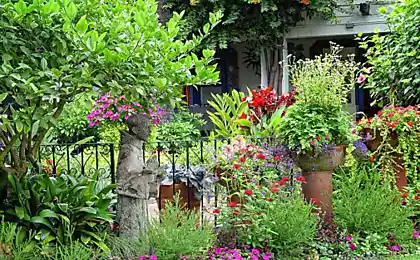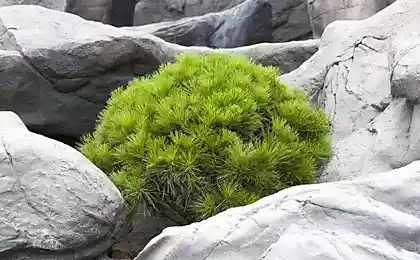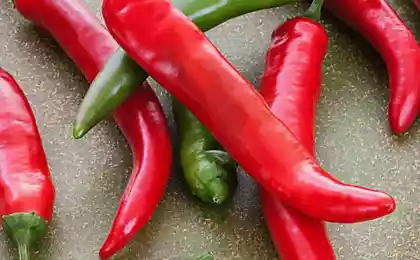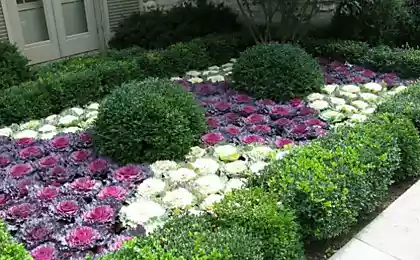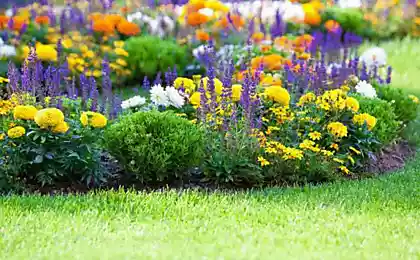785
Hawthorn: the most unpretentious, decorative types, features of cultivation
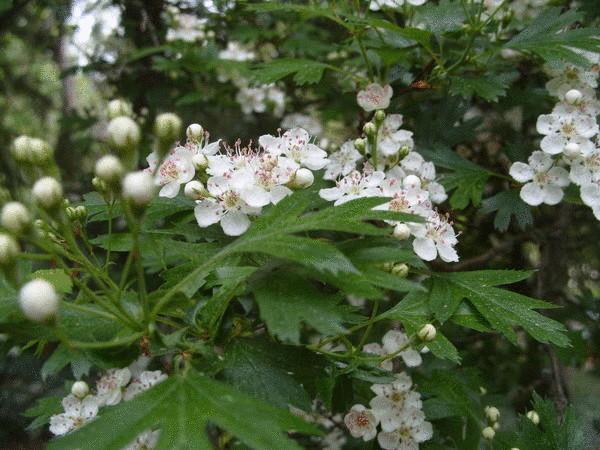
In the may time a good one more representative of the huge Rosaceae family – the hawthorns.
Right now they are blooming furiously, wasting around a kind, sweet-tart, for many, even an unpleasant odor. "Well, who does not know them?" — you will ask. So did I until we saw the large-and drought-tolerant hawthorn poyarkovoj, yellow fruits of which up to 2.5 cm and met with hawthorn stevena – dedicated to the first Director of the Nikitsky Botanical garden. After that, I realized that many do not know about these interesting woody plants.
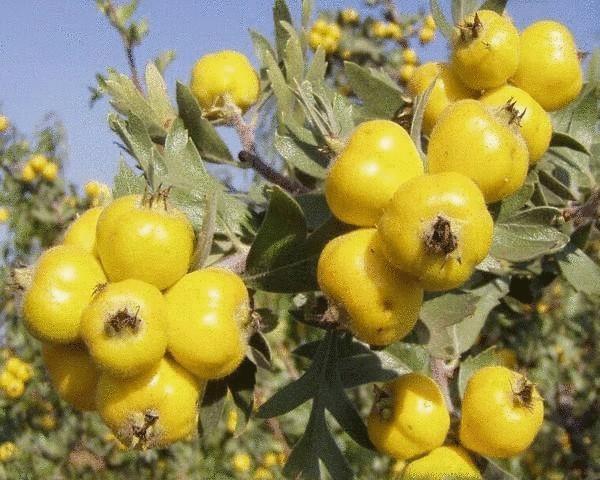
Most of the hawthorns, which will be discussed, not only spectacular in single and group plantings, but they are suitable for spiny, molded, trellis or free-growing, flowering (especially forms), melliferous, medicinal, high hedges and walls, which can be reliably surround and protect their country. I recall that when creating a hawthorn hedge must adhere to between plants in the clipped hedges, the distance of 0.5-0.6 m, in a freely growing – 1.5 m.

Sprawozdanie Botanical botany has long been calculated and as described about 1250 taxa – so much has kind of Hawthorn (Crataegus) species. For the most part they are common in temperate, rarely subtropical regions of the Northern hemisphere. It is slow-growing, long-lasting living to 200-300 years, small trees or large shrubs, often with a sharp coarse or fine spines, dense branching and arrangement of leaves, and large corymbose inflorescences of white, pink flowers and edible in most species, pome-shaped fruit.
Look at the most undemanding species.
Hawthorn prickly, or обыкновенный
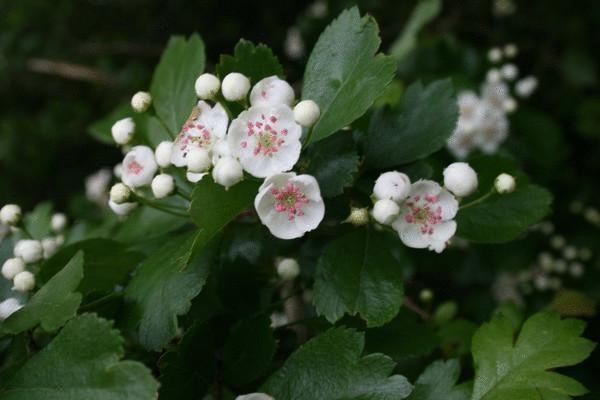
Hawthorn is a spiny, or common (Crataegus oxyacantha) is very beautiful in the flowering and fruiting shrub or small tree with a height of 3-4 m with dense foliage, numerous spikes (cultural forms are absent or in small numbers). Leaves obovate, 3-5-lobed, with a length of 1-4 cm Flowers are white, gathered in small inflorescences corymbs; blooming in may-June. The fruits are small, rounded, brownish-red, ripen in September-October. Birthplace: Transcarpathia, Kaliningrad oblast, southern Scandinavia, Western Europe.
For small areas will be in demand it Gladkova form (C. oxyacantha var. laevigata (=Crataegus laevigata)) up to 3 m.
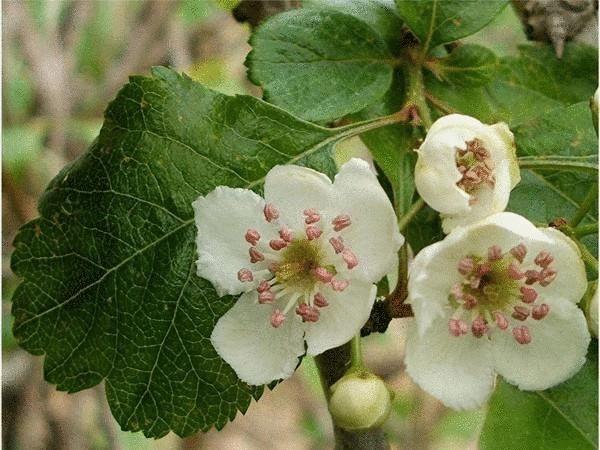
Lovers of unusual shapes like spectacular in bloom:
- ‘Paul's Scarlet’ (flowers double, bright red);
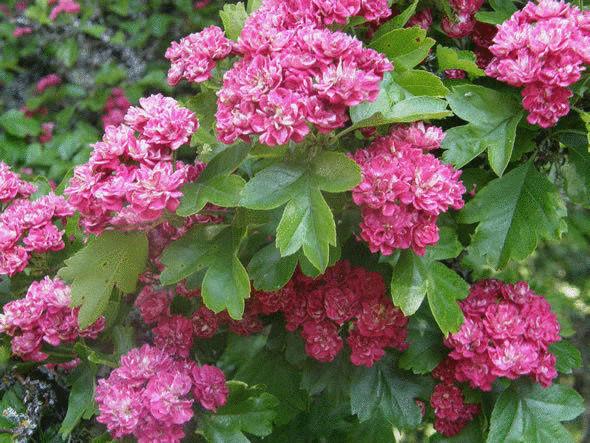
- ‘Crimson Cloud’ = ‘Punicea’(flowers large, with a diameter of 2 cm, dark red with white center);
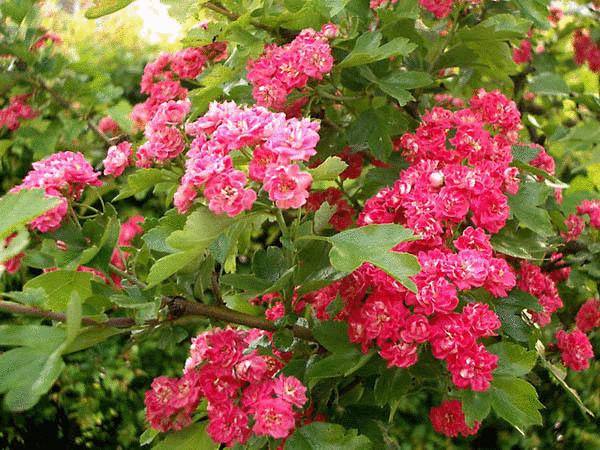
- ‘Rosea’(flowers light pink with a white center).
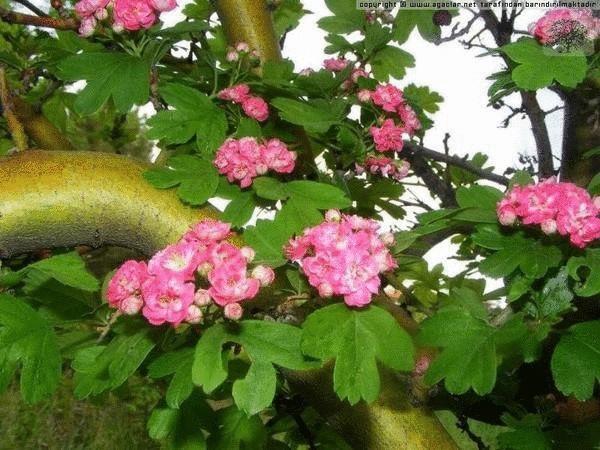
Features vyrashivaniem hawthorn is hardy in the southern and Central areas of horticulture, its form is less winter-hardy and suitable for cultivation only in the southern regions. Shade-tolerant, drought-resistant, undemanding to soil – growing even in dry and stony.
Hawthorn blood-red, or сибирский
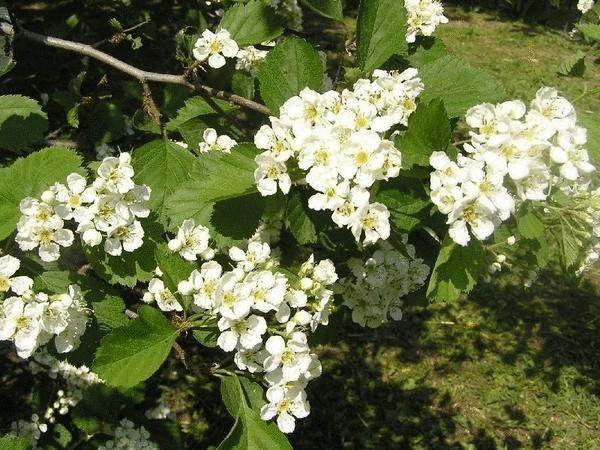
Hawthorn blood-red, or Siberian (Crataegus sanguinea) is one of the most common culture species. It is well studied as medicinal plant. It is a small tree or shrub 2-5 m with a few spines or without them. The leaves are dark green, dull, rough, length 3-6 cm Flowers are white in inflorescences consisting of bare-corymbs; blooming in may-June. The fruits shiny, red, almost spherical, with a diameter of 1 cm; ripen in August-September and soon fall. Birthplace: East European part of Russia, Western and Eastern Siberia, Middle Asia, Mongolia.
Features vyrashivaniem, light-requiring, prefers soils of average moisture.
Hawthorn круглолистный
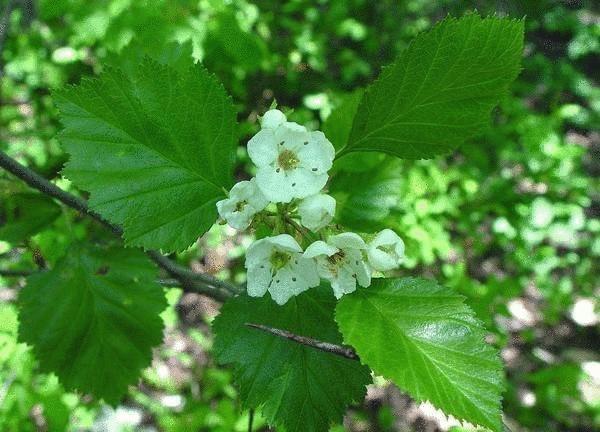
Round-leaved hawthorn (Crataegus rotundifolia) — one of the most Northern species and one of the best hawthorn for hedges. He hails from North America, is a tree or shrub up to 5-6 m thick, spherical crown and large spines. The leaves are leathery, shiny, dark green. The flowers are white, collected in inflorescence corymbs; blooming in may-June. Fruit subglobose, red, with a diameter of 1.2 cm, edible, sweet, ripen in September.
Features vyrashivaniem, drought-resistant.
Hawthorn крупноколючковый
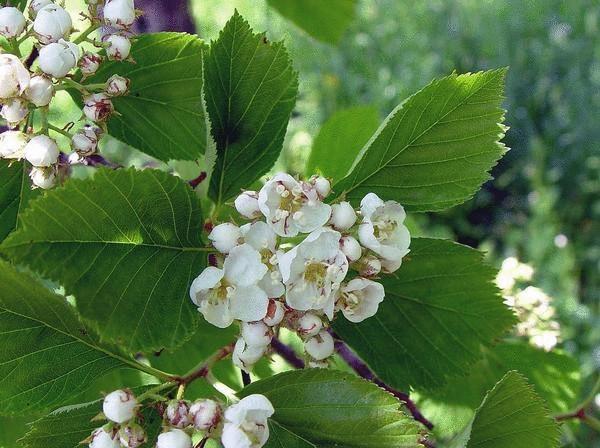
Krupnokuskovoy hawthorn (Crataegus macrocantha = C. succulentha var. macrocantha) also from North America. This is a very decorative appearance, which is a tree or shrub 3-6 m with sharp spines. Flowers white, in complex corymbs; blooming in may-June. Fruit Carmine, almost spherical, fleshy, edible; ripen in September-October.
Features versiunile hardy, a slight freezing of the shoots possible in the harsh winters in Central Russia. Drought tolerant, but prefers moist, fertile, calcareous soil.
Hawthorn мягкий
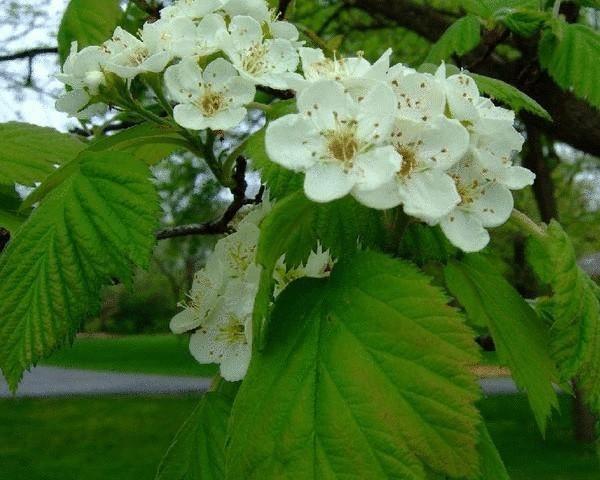
Another North American species – the soft hawthorn (Crataegus mollis). It is very decorative, gustooblistvennye tree up to 10 m, the spines are numerous. The leaves are dark green, hard, length 4-12 cm Flowers are white, in the complex felt corymbs; blooming in may. The fruits are edible, bright or dark red, globose; ripens in September and fall off.
Features vyrashivaniem. Prefers fertile, calcareous soil.
Hawthorn полумягкий
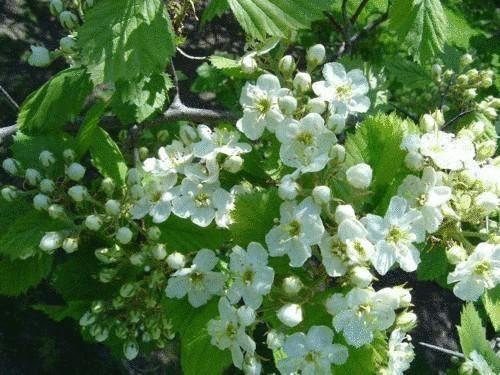
The semi-soft hawthorn (Crataegus submollis) is decorative from spring to late autumn tree, with a height of 6-10 m with densely leafy crown, with many long spines. The leaves are dark yellow-green, hard, length up to 10 cm Flowers are white in a complex, tomentose corymbs; blooming in may-June. Fruits are numerous, edible, bright orange-red, with a diameter of 2 cm, ripen in September and fall off quickly. Homeland: North America.
Features vyrashivaniem on the European part of Russia (North to the line Saint-Petersburg – Arkhangelsk – Russia) and neighboring countries. Light-requiring, prefers fertile, moist soil.
Hawthorn однопестичный
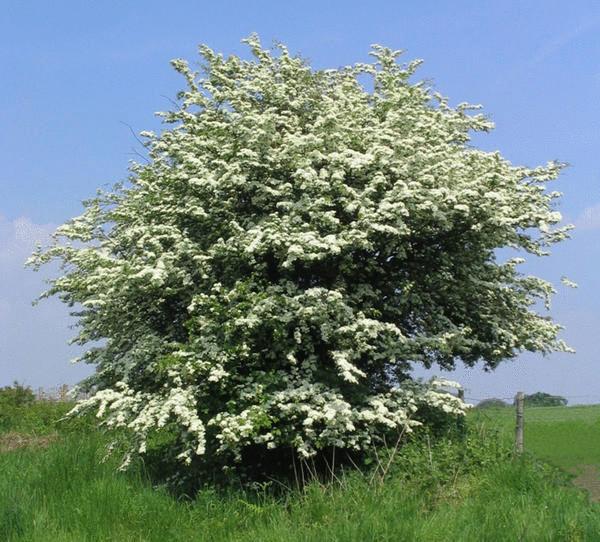
European species – hawthorn (Crataegus monogyna). This tree or shrub of 2-5 m with a dense crown of short spines. The leaves are dark green, small, ovate, 3-5-lobed. The flowers are white, glabrous, complex inflorescences corymbs; blooming in may and early June. The fruits are red, small; ripens in September. Grows slowly.
Decorative shapes:
- ‘Bicolor’ (flowers white with a pink border);
- ‘Pink Hawthorn’ (flowers light pink, double);
- ‘Rosea-Рlena’ (flowers pink, double);
- ‘Stricta’ (with a pyramidal crown);
- Rubra Plena’ (flowers dark pink, double).
Features vyrashivaniem winter hardy in the Northern regions of Russia, forms of winter-hardy in the southern zone. Light-loving; drought tolerant.
Hawthorn перистонадрезанный
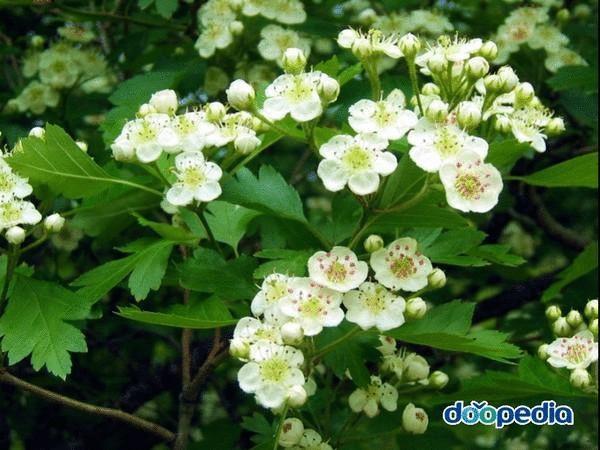
Peritonektomie hawthorn (Crataegus pinnatifida) is one of the most ornamental species. It is a tree or shrub of 4-6 m, without spines. Leaves are bright green, 5-10 cm Flowers are large, white complex, drooping corymbs; blooming in may-June. The fruits are edible, bright red with white dots, globose, up to 1.5 cm long; ripen in August-September. Homeland: Far East, Korea, China.
Features vyrashivaniem, light-requiring, tolerate partial shade, is drought resistant, but develops best on moist soils. Required control the spread of root seedlings.
Hawthorn petechia шпора

Petechia spur hawthorn (Crataegus crus-galli) is one of the most decorative of North American species suitable for the device molded absolutely impenetrable hedges. However, cut this kind of transfers is worse than other hawthorns. This tree or shrub with a height of 6-10 m, large prickles many. The leaves are dark green, leathery. White flowers in complex inflorescences corymbs; blooming in may-June. The fruits are brown-red, globose; ripens in September and October and often remain on the tree until spring.
Features vyrashivaniem hardy, in St. Petersburg freezes. Drought resistant.
Hawthorn сливолистный
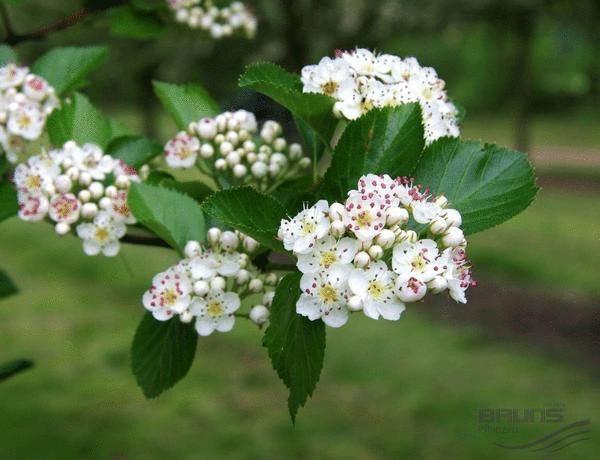
Due to the slow growth, the density of branching and listoraspolozhenija, this is one of the best among the hawthorn species for hedges, which are characterized by high density and decorative effect. It tolerates a haircut. Livelily hawthorn (Crataegus x prunifolia =C. persimilis ‘Prunifolia’) — a hybrid hawthorns petechia spur and krupnoblochnogo. Gustooblistvennye tree or shrub 3-8 m high; spines are average, but a lot of them. The leaves are thick, leathery, dark green, in autumn orange – red, up to 8 cm Flowers white, in complex corymbs; blooming in may-June. Red fruit, almost spherical, with a diameter of 1.3 cm; ripen in October and fall off gradually. Grows slowly. Very decorative from spring to late autumn.
Features vyrashivaniem.
Common characteristics of growing
- Hawthorns light, can tolerate shade but flower and fruit are not so abundant, drought resistant, relatively little demanding on the soil.
- Hawthorn damaged a significant number of pests and diseases, which are common with traditional fruit plants. The main pests are the butterflies (especially aporia Crataegi), aphids, Apple mealybug, beetles vetoed; of diseases – powdery mildew and leaf rust.
- Long propagated by stratified seeds, root suckers, layering; garden forms by grafting.
- The hawthorns perfectly endure the molding cut that contributes to the development of thorns. Baryshnikova hedges pruned after flowering or in autumn.published
P. S. And remember, only by changing their consumption — together we change the world! ©
Source: www.7dach.ru
The science of fitness: what you need to know about cortisol, superfood and high-intensity training
Monastic herbalist: don't want to get sick — go dig yourself three root — burdock, couch grass and dandelion



